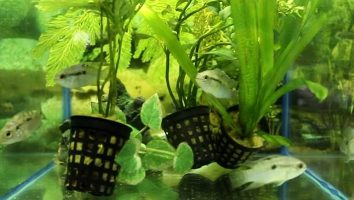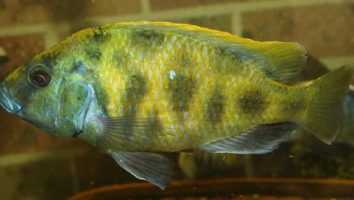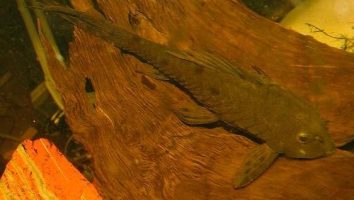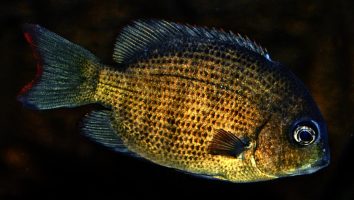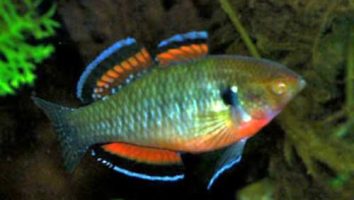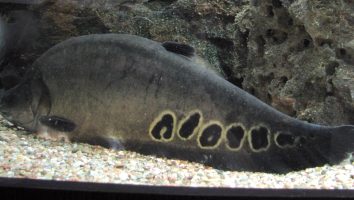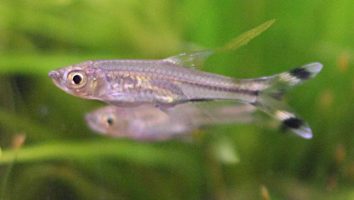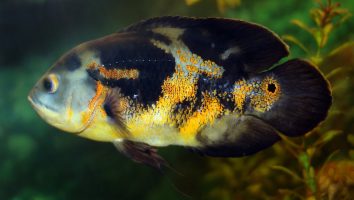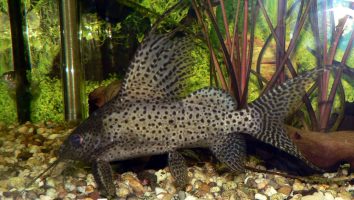The least killifish (Heterandria formosa) is a freshwater fish that is native to the southeastern United States.
This little fish is only about an inch long and is a great addition to any nano aquarium.
Despite their small size, they are surprisingly hardy and can even tolerate brackish water conditions.
If you’re thinking about getting a least killifish for your aquarium, read on to learn everything you need to know about their care.
Table of contents
Species overview
The least killifish (Heterandria formosa) is a species of freshwater fish that’s native to the southeastern United States.
They are found in a variety of habitats, but prefer slow-moving waters with plenty of vegetation. This could be anything from ponds and wetlands to slow-moving rivers and streams.
Least killifish are very small, only growing to be about an inch long at most. They are a silver color with a dark stripe running down their side.
These fish are very popular in the aquarium trade. They are easy to care for and are compatible with a wide variety of tank mates.
Appearance
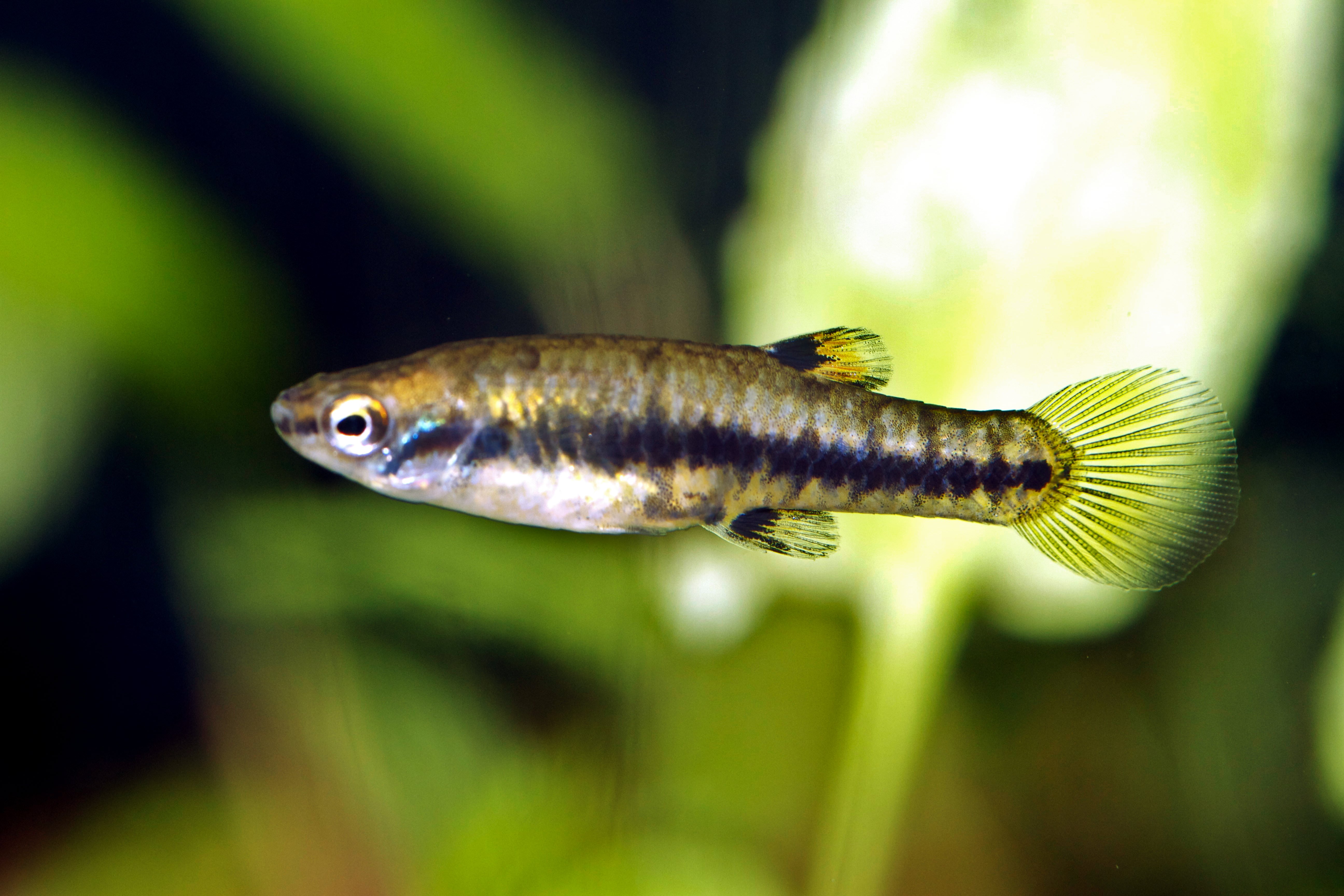
The Least Killifish is one of the tiniest freshwater fish that you can find. They only grow to be about an inch in length at most.
Despite their small size, these fish are very colorful. They have a bright blue coloration that covers their entire body. This is accented by a few orange stripes that run along their sides.
The fins on this fish are also very colorful. The dorsal fin is blue with an orange stripe running down the center. The anal fin is orange with a blue stripe. The caudal and pectoral fins are mostly blue with a bit of orange near the center.
Least Killifish have a very thin and streamlined body. This helps them to be very speedy in the water.
Lifespan
The average lifespan of a least killifish is around 2 years, although some have been known to live for up to 4 years in captivity. These fish are relatively short-lived, and their lifespan can be impacted by a number of factors.
One of the biggest factors is diet. In the wild, these fish eat a variety of small invertebrates. In captivity, they’re often fed a diet of commercial flake food, which isn’t as nutritious. This can lead to health problems and a shorter lifespan.
Other factors that can impact their lifespan include water quality, stress, and disease.
Size
The maximum size for a Least Killifish is only about 1.5 inches. These fish are very small and delicate so they need to be in an aquarium with other peaceful fish that won’t try to eat them.
Tank
Tank Size
The minimum tank size for least killifish is 2.5 gallons. This is a very small freshwater fish that is perfect for nano tanks and beginner aquarists.
While you can technically keep them in a smaller tank, we recommend going with at least a 5-gallon tank if you want to keep a school of these fish. This will give them enough space to swim around and stay healthy.
Water Parameters
The Least Killifish is a small, delicate fish that is found in quiet freshwater habitats throughout the southeastern United States. They prefer still or slow-moving waters with plenty of vegetation.
In the wild, the water is typically soft and acidic. This is the ideal water condition for them in captivity as well.
While they are pretty adaptable, sudden changes in water parameters can be stressful. It’s best to maintain consistent water quality, especially if you plan on breeding them.
Here are a few guidelines for keeping Least Killifish:
- Water temperature: 65 to 75 degrees Fahrenheit
- pH levels: 6.0 to 7.0
- Water hardness: 2 to 8 dGH
- Alkalinity Levels: 2-6 dKH
What To Put In Their Tank
The least killifish is a species of fish that’s native to North America. They’re found in a variety of habitats but prefer areas with plenty of vegetation.
This is something you’ll want to take into account when setting up their tank.
A good starting point is to use a substrate that can support plant growth. This will give them a place to hide and feel secure.
You can use gravel, sand, or even clay. Just make sure it’s not too sharp or course.
As for plants, you have a lot of options. Water wisteria, hornwort, and java moss are all great choices. You can even go with floating plants if you want (just make sure there’s plenty of open swimming space).
In terms of decorations, you can use rocks, driftwood, and caves. Just make sure they’re not too big or they’ll overwhelm the fish.
Common Diseases
The good news with Least Killifish is that they are very resistant to disease. In fact, these fish are so hardy that they’re often used to help cycle new tanks!
With that being said, no fish is completely immune to disease. There are always going to be some risks when keeping any animal, no matter how big or small.
The most common diseases that these fish experience are the usual freshwater culprits. Ich is the most common, but various other infections and parasites can strike too.
Be on the lookout for anything out of the ordinary so you can act fast. White spots, scars, cuts, or a change in behavior are all causes for concern. Even a disease that isn’t very severe can progress into something serious if left untreated.
When you notice something it’s important to act fast. Consult your vet and begin treatment immediately. The sooner you act, the higher the chance is that your fish will recover.
Of course, the best way to keep the risk of disease low is by simply keeping the tank in great shape. Not providing clean, high-quality water conditions will significantly increase the chance of your Least Killifish getting sick.
Behavior & Temperament
The least killifish is a peaceful community fish that does best in a group. They are shy by nature and will often stay hidden if there are not enough of their own kind present. They are known to school together and prefer to stick to their own kind.
The least killifish is an active fish that loves to swim. They are constantly in motion, even when they are resting. They are not shy about coming to the surface of the water and will often swim in the middle of the water column.
These fish are not known to be aggressive, but they can be nippy. They may nip at the fins of other fish or pick at algae. If you have live plants in your aquarium, they may nibble on them as well.
Tank Mates
The least killifish is a peaceful little creature that can get along with most other fish species.
These fish are best kept in groups of 6 or more. They’re social creatures that do best when they have some buddies to hang out with.
Least killifish are also peaceful eaters. They’re not going to bother other fish in the tank and they’re not on the menu for most predators.
This gives you a lot of freedom when it comes to choosing tank mates.
Here are a few compatible species to get you started:
- Guppies
- Platies
- Mollies
- Swordtails
- Dwarf Gouramis
- Endler’s Livebearers
- Neon Tetras
- Cherry Shrimp
Breeding
The least killifish is a small, livebearing fish that is easy to breed in the home aquarium. These fish are found in the southern United States, and they are common in the pet trade.
Least killifish are not sexually dimorphic, so it can be difficult to tell males from females. The best way to sex these fish is to look at their anal fins. Males have longer, thinner fins than females.
To breed least killifish, you will need a breeding tank that is at least 10 gallons in size. The tank should be heavily planted, and there should be plenty of hiding places for the fry.
The water in the breeding tank should be soft and acidic. The temperature should be between 72 and 78 degrees Fahrenheit.
To induce spawning, you can do a large water change or add live plants to the tank. The female will lay her eggs in the plants, and the male will fertilize them.
The eggs will hatch in about two days. The fry will be very small and vulnerable, so they will need to be fed small live foods. After a few weeks, they can be switched to baby brine shrimp and crushed flake food.
Conclusion
The least killifish is a great fish for beginners and experts alike. They’re easy to care for and can thrive in a variety of different tanks.
If you’re looking for a fish that is low-maintenance but still interesting to look at, the least killifish is a great option.
Overall, we think this fish is a great option for anyone who is looking for a new fish to add to their tank.

